Once you learn how to grow borage, you’ll wonder why you didn’t start sooner! Borage Is a robust, quick-growing annual herb whose deep blue, star shaped flowers make it a colorful and refreshing addition to salads. Growing borage is a great way to add beauty and flavor to a garden.
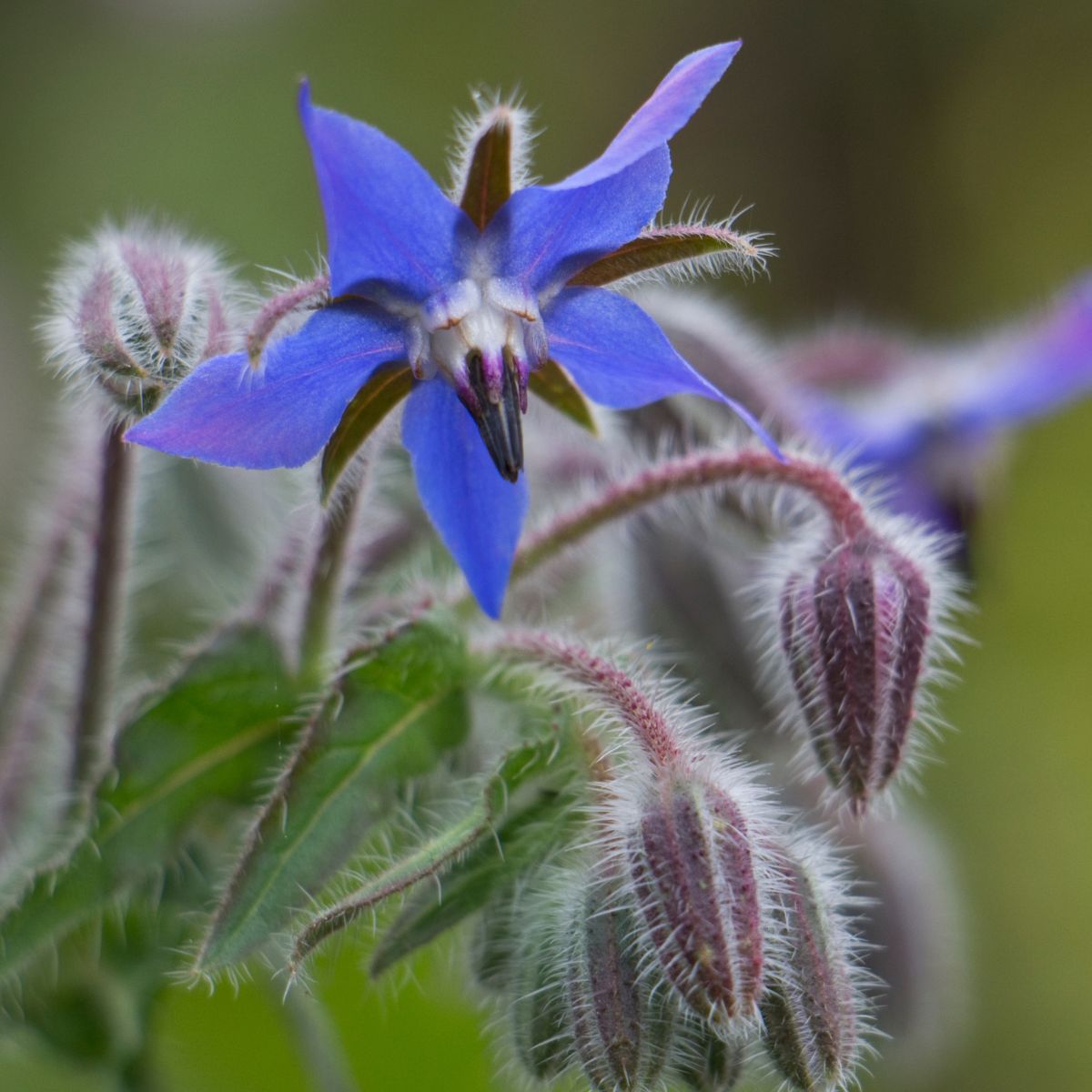
Although not as common as thyme or basil, it makes a great addition to a culinary garden and it’s fairly easy to grow. All parts of the plant, except the roots, can be used, making it well worth the effort. Let’s look into this in more detail.
What is Borage?
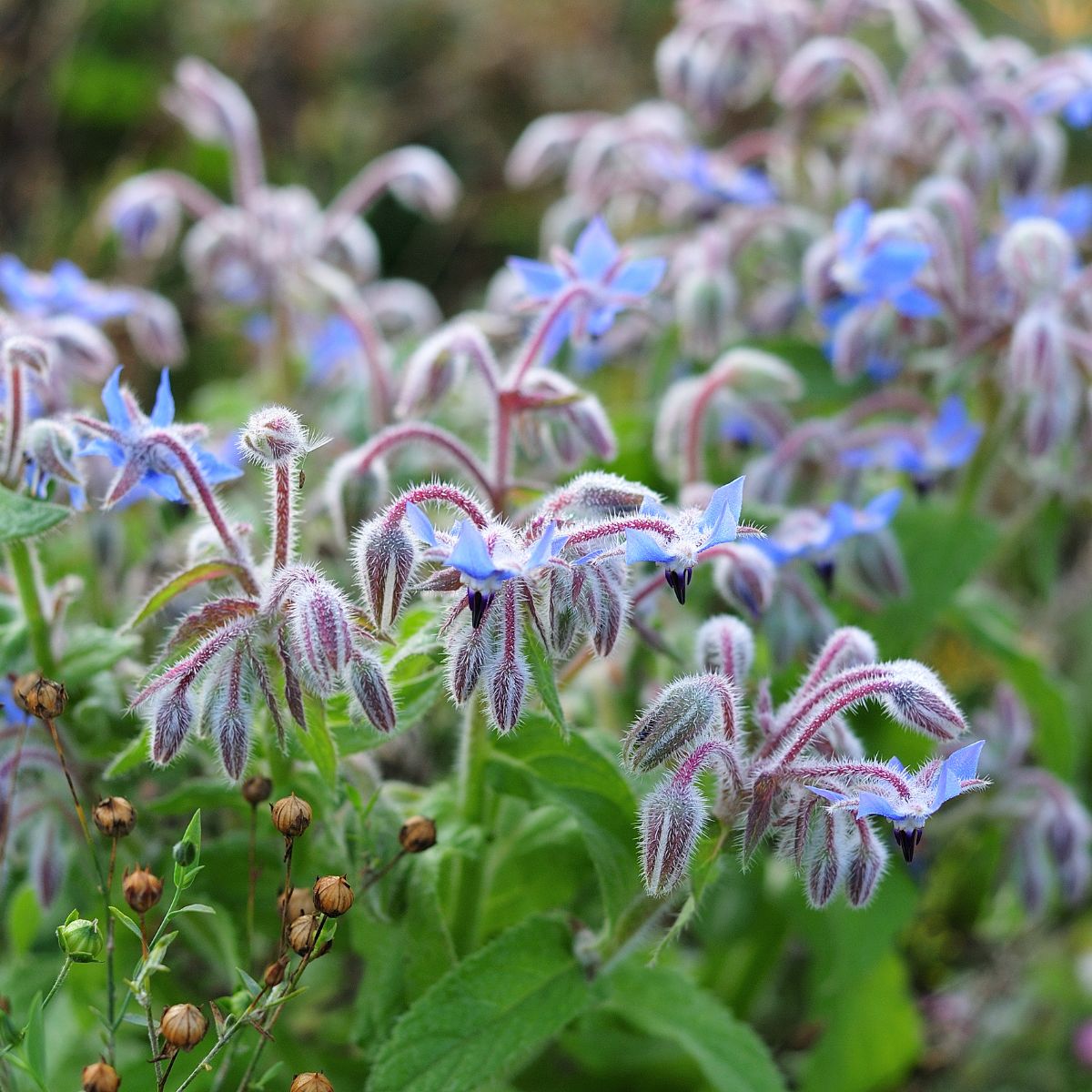
Borage is an herb that can be grown as an ornamental plant, but it’s also valued for its edible leaves and flowers. This herb produces vibrant blue or purple flowers and has a mild cucumber flavor that adds a refreshing twist to salads, smoothies, and more.
Borage plants grow in the wild, but you can also easily add them to your garden with a few tips on how to grow them best.
In the countries around the Mediterranean sea, and in the warmer climates of the United States, borage grows wild in both sun and shade. It self-seeds quite readily but it’s difficult to transplant. It makes an excellent ground cover and soil binder.
Throughout the ages, borage has been widely used as a medicinal herb. It was cultivated as a garden herb, and was first spread by the Romans to Central Europe, and then by plant fanciers to the new world.
Benefits of borage
The borage plant has many benefits, including:
- attracting pollinators with the borage flowers
- providing a source of nutrition to humans
- improving soil health
Fortunately, borage is easy to cultivate in any garden or container, but it does require some special considerations.
How to Grow Borage
When it comes to growing borage, there are some important tips to consider. First of all, borage needs plenty of sunlight — at least 6 hours per day — in order for it to be healthy and productive. It also thrives in fertile, well-draining soil that’s kept moist throughout the growing season with regular watering.
Additionally, borage will do best in slightly acidic soil with a pH between 5.6 and 6.5.
Finally, borage benefits from both organic fertilizer and mulch applied when planting in order to give the seedlings all the nutrients they need as they start growing. With these simple tips and just a bit of love and attention, you can enjoy beautiful borage blooms and zesty cucumber-like fruits right in your own garden!
Borage seeds
Buy some borage seeds to get started the first year. After that, your borage will reseed itself. Amazon has a set of blue and white borage seed packets, as you see below.
How to plant
Plant your borage seeds under the soil about 1/4 to 1/2 an inch deep. Put them in rows about 12 inches apart. The plants will usually grow to about 4-6 inches tall. Be sure the soil is well-draining and of a medium pH balance for the plant to thrive.
When to sow
You can grow borage from seed, by sowing it directly into the soil in the spring, as soon as the threat of frost passes. But, if you’re too excited to wait until then, you can sow your borage seeds indoors in March- April, preferably in a small homemade greenhouse or propagating box, and keep them in a sunny spot.
As soon as the borage seedlings are big enough to handle (usually about ½ inch or more of growth), transplant them to a nice pot, put them in a spot with good light, and water them regularly. Be careful not to damage the roots or the seedlings will die.
Plant again in early summer for a late summer harvest.
Watch for frost
Don’t put the plants outdoors until there is no risk of frost! It is possible, however, to put them out during the day and bring them in at night; this will also help harden them off. Later, transplant them to larger boxes, or put them out into the vegetable patch or among the flowers in the garden.
Water liberally
Water the plants throughout the season and feed them regularly if they are in a box. In good garden soil, borage plants won’t need feeding.
Borage on the balcony and the patio
Even if you don’t have garden space, you can still grow your own borage. Like many herbs, it thrives in boxes and pots on a balcony or patio. You could even grow it in a kitchen window if the conditions and lighting were right.
Companion Plants for Borage
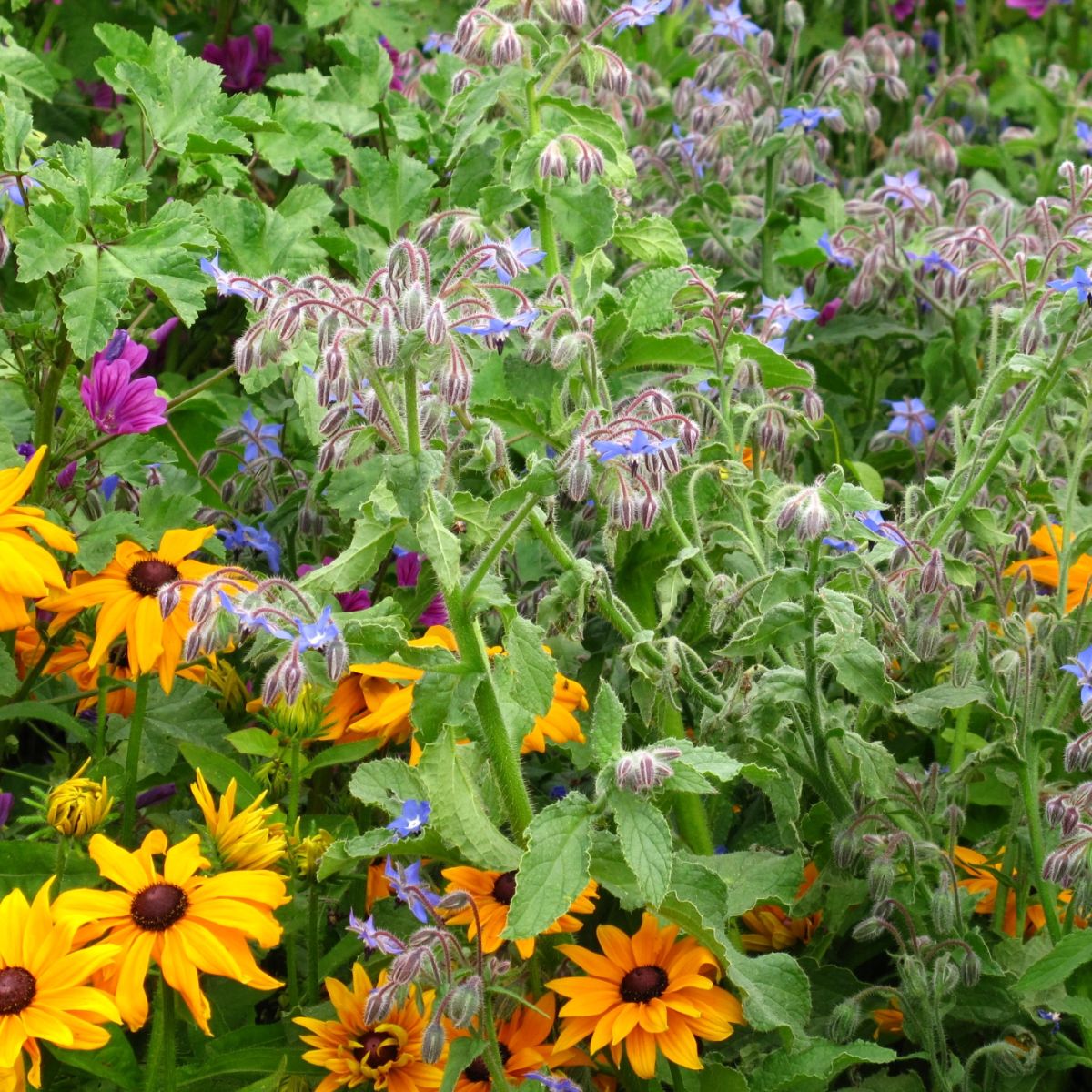
Companion planting is another way to keep your borage healthier and help it work for the rest of your garden. If you want some companion plants for your borage, consider:
- tomatoes
- squash
- cabbage
- strawberries (see which other plants are good strawberry companions)
- many herbs and flowers
Borage is an excellent companion plant to the above because it helps repel tomato worms and cabbage worms. The borage flowers can attract beneficial insects like bees and wasps. In addition to being great pollinators, these insects repel many common garden pests.
It is believed to help improve the flavor of strawberries when grown beside them, and borage leaves are rich in minerals and vitamins so they can also be used as a mulch for nearly any type of garden vegetable.
Borage adds trace minerals to the soil that can help strawberries, tomatoes, and other vegetables grown with it taste better.
Borage Diseases and Pests
Borage belongs to the Boraginaceae family and has few enemies outdoors. Its hairiness seems to protect it against insect attacks.
Indoors it can be bothered by aphids and white fly if the air is too dry, so make sure you mist regularly. If damage is not too far advanced, the plant can be treated by spraying two to three times a week for two to three weeks. Be careful not to spray the plants with chemicals if they will be used later in the kitchen!
As you can see, there are many benefits to growing this beautiful, useful, tasty herb. And now that you know how, all that’s left is to get your seeds and give it a go!
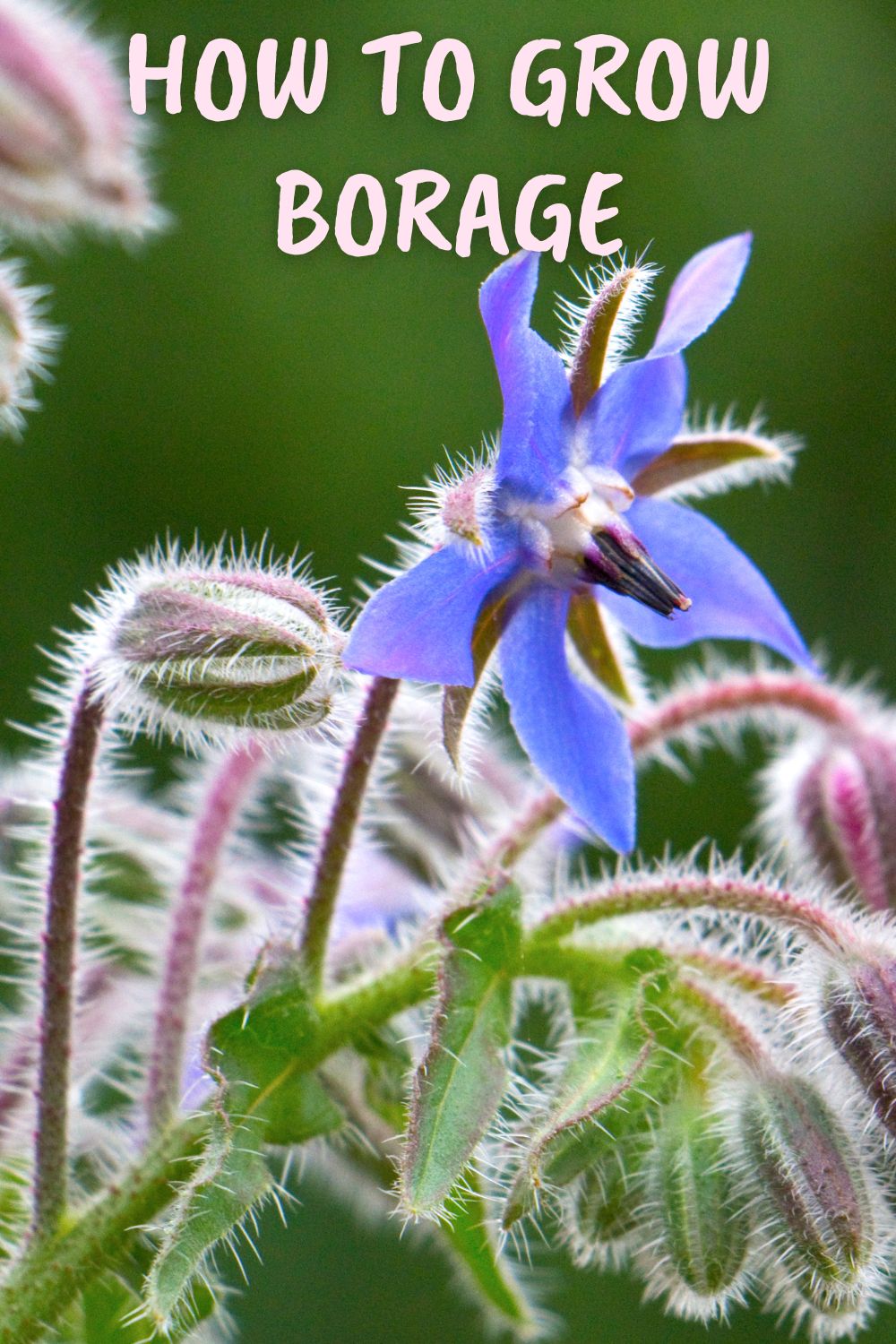

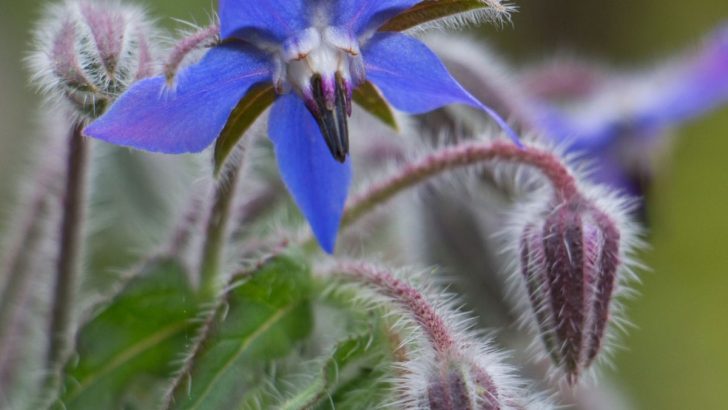


7 Best Companion Plants For Eggplant (And 3 To Avoid)
Saturday 21st of January 2023
[…] Here’s how to grow borage. […]
8 Best Companion Plants For Squash (And 4 To Avoid)
Wednesday 21st of December 2022
[…] Here’s how to grow borage. […]
13 Best Companion Plants For Basil (And 5 To Avoid)
Monday 28th of November 2022
[…] Borage works well alongside basil to repel tomato pests. As an added bonus, it also might improve both the growth and flavor of basil. Here’s how to grow borage. […]
11 Best Companion Plants For Corn (And 4 To Avoid)
Monday 28th of November 2022
[…] flowers of this herb also attract beneficial insects, like pollinators and predators. Learn about growing borage and its […]